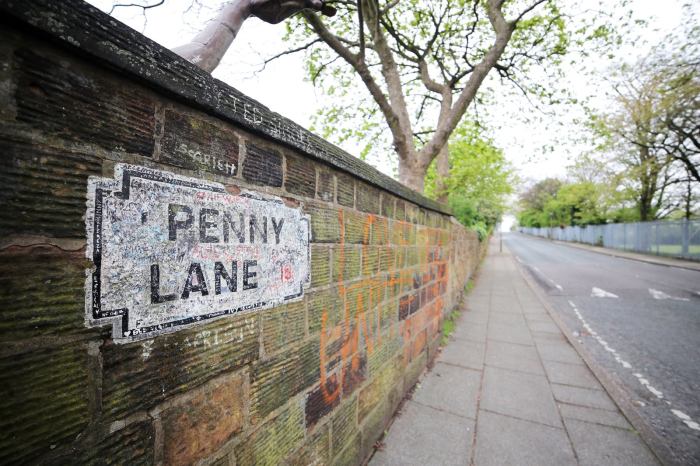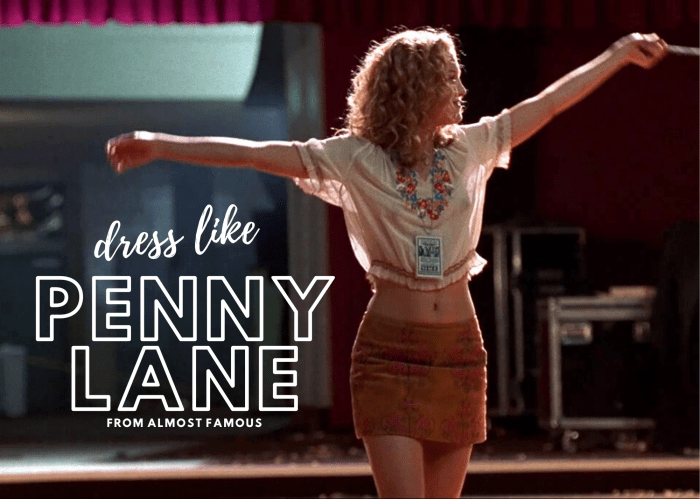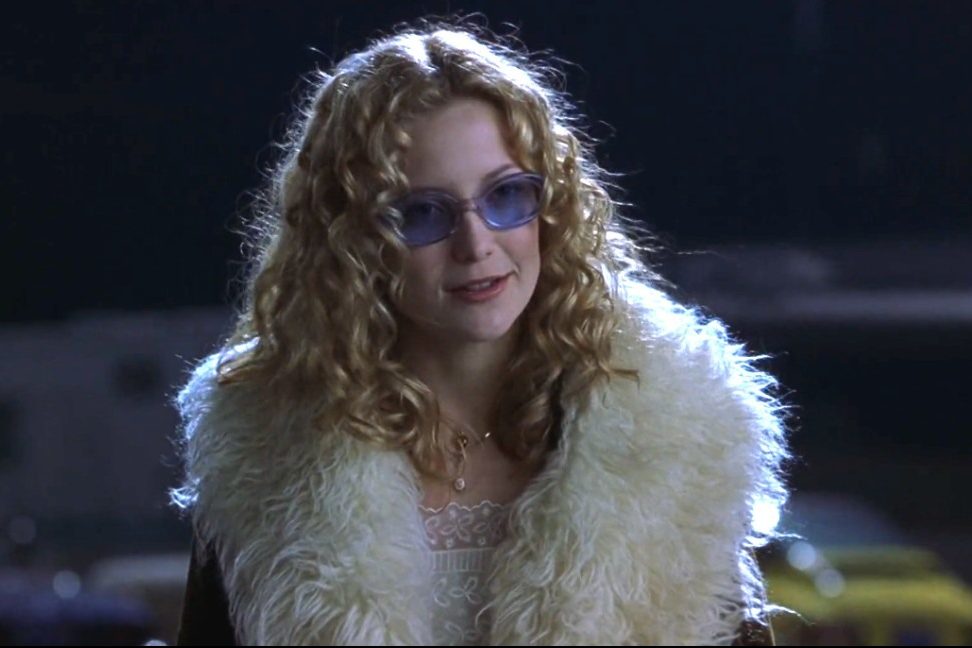Penny Lane, immortalized in song by The Beatles, is a street in Liverpool steeped in history and cultural significance. From its humble beginnings as a working-class neighborhood to its present-day status as a tourist destination, Penny Lane has captured the imagination of artists, writers, and music lovers alike.
The Beatles’ iconic song “Penny Lane” offers a glimpse into the street’s unique character and charm, while its physical location and historical context provide a deeper understanding of its enduring legacy.
The Beatles’ “Penny Lane”

“Penny Lane” is a song by The Beatles that was released on their 1967 album, Sgt. Pepper’s Lonely Hearts Club Band. The song was written by John Lennon and Paul McCartney, and it is one of the most iconic songs in The Beatles’ catalog.
The song is a nostalgic look back at Lennon’s childhood in Liverpool, and it features a number of references to local landmarks, such as the Penny Lane roundabout and the Blue Meanies fish and chip shop.
Historical and Cultural Context
“Penny Lane” was written during a time of great social and cultural change in Britain. The 1960s were a time of economic prosperity and increased social mobility, and the Beatles were at the forefront of the cultural revolution that was taking place.
The song’s lyrics reflect this sense of change, with references to “the barber showing photographs” and “the fireman filling up the tank.” These images suggest a world that is in flux, and they capture the sense of excitement and optimism that was prevalent in Britain at the time.
Lyrical Analysis
The lyrics of “Penny Lane” are full of vivid imagery and symbolism. The song begins with a description of the Penny Lane roundabout, which is a major landmark in Liverpool. The roundabout is a symbol of the community, and it is a place where people from all walks of life come together.
The song’s lyrics also reference a number of other local landmarks, such as the Blue Meanies fish and chip shop and the barber shop. These references help to create a sense of place, and they make the song more relatable to listeners.
The song’s lyrics also contain a number of deeper meanings. The reference to “the fireman filling up the tank” is a metaphor for the way that people are constantly trying to fill a void in their lives. The lyrics “in the shelter of your love” suggest that the Beatles are looking for a place where they can feel safe and loved.
The song’s final verse is a plea for understanding, and it suggests that the Beatles are looking for a place where they can be themselves.
Musical Composition
“Penny Lane” is a musically complex song. The song is in the key of G major, and it features a number of different time signatures. The song’s melody is catchy and memorable, and it is one of the most recognizable songs in The Beatles’ catalog.
The song’s instrumentation is also noteworthy, and it features a number of different instruments, including a trumpet, a recorder, and a Mellotron.
“Penny Lane” is a significant song in The Beatles’ discography. The song is a nostalgic look back at Lennon’s childhood, and it features a number of references to local landmarks. The song’s lyrics are full of vivid imagery and symbolism, and the song’s musical composition is complex and memorable.
Penny Lane, immortalized in song by The Beatles, is a vibrant street in Liverpool. If you’re seeking a similar lively atmosphere, consider exploring Swiss Serpong in Indonesia. This bustling shopping and entertainment complex offers a diverse array of boutiques, restaurants, and entertainment options.
Afterwards, return to Penny Lane for a nostalgic stroll and delve into its rich history.
“Penny Lane” is a classic song that has stood the test of time, and it remains one of The Beatles’ most popular songs today.
Penny Lane, Liverpool

Penny Lane is a street in the city of Liverpool, England. It is located in the south of the city, in the suburb of Allerton. The street is named after James Penny, a local landowner who donated the land for the construction of the road in the 18th century.
Penny Lane is a relatively short street, running for just over half a mile. However, it is one of the most famous streets in Liverpool, thanks to the Beatles song of the same name. The song was written by John Lennon and Paul McCartney in 1967, and it was released on the album Sgt. Pepper’s Lonely Hearts Club Band.
Historical and Cultural Significance, Penny lane
Penny Lane has a long and rich history. The street was first laid out in the 18th century, and it was originally known as Penny Lane End. The name was changed to Penny Lane in the 19th century.
Penny Lane has been home to a number of notable people over the years. These include the poet William Roscoe, the painter George Stubbs, and the actor Laurence Olivier.
Penny Lane is also home to a number of historic buildings. These include the Penny Lane Fire Station, which was built in 1904, and the Penny Lane Library, which was built in 1921.
Anecdotes and Stories
There are many anecdotes and stories related to Penny Lane. One of the most famous is the story of the “Penny Lane barber”. The barber, whose real name was Thomas Byrom, was a local character who was known for his eccentric behavior.
Another famous story is the story of the “Penny Lane bus”. The bus was a local bus route that ran from Penny Lane to the city center. The bus was often used by the Beatles, and it is mentioned in the song “Penny Lane”.
Penny Lane is a street with a rich history and culture. It is a street that is loved by locals and visitors alike.
Artistic Depictions of Penny Lane

Penny Lane has inspired numerous artistic interpretations, capturing its iconic landmarks and vibrant atmosphere. From paintings to sculptures and photographs, artists have employed various techniques and styles to portray the essence of this historic street.
Paintings
Paintings of Penny Lane often depict its colorful buildings and bustling street life. Impressionist works, such as those by John Lennon’s sister Julia Baird, capture the vibrant atmosphere and movement of the street. Other artists, like John Piper, use a more abstract style to convey the street’s architectural beauty and historical significance.
Sculptures
Sculptures of Penny Lane’s iconic landmarks, such as the barber shop and the roundabout, have been created to commemorate the street’s cultural heritage. These sculptures often use bronze or other durable materials to withstand the elements and preserve the memory of Penny Lane for future generations.
Penny Lane, immortalized in the Beatles’ song, is a vibrant street in Liverpool, known for its eclectic shops and charming atmosphere. For a taste of the city’s musical heritage, head to a rock bar in the area. These lively venues offer live music, a wide selection of drinks, and a welcoming ambiance.
After a night out, return to Penny Lane to soak in its nostalgic charm and the echoes of the Beatles’ legacy.
Photographs
Photographs of Penny Lane have documented its transformation over time, capturing both its historical significance and its modern-day vibrancy. Documentary photographers, such as Martin Parr, have used their work to highlight the social and economic changes that have occurred on the street.
These artistic representations contribute to Penny Lane’s cultural legacy by preserving its history, celebrating its unique character, and inspiring future generations to appreciate its enduring charm.
Penny Lane, with its charming cottages and quaint shops, evokes a nostalgic charm that transports us to a bygone era. As we stroll along its cobbled streets, we can’t help but notice the striking resemblance to the idyllic green terrace tmii , a serene sanctuary nestled amidst lush greenery.
The parallel between these two charming destinations is undeniable, as they both offer a glimpse into a simpler time where the beauty of nature and the warmth of community intertwine.
Literary and Cultural References to Penny Lane

Penny Lane has been immortalized in numerous literary works, films, and other cultural references, solidifying its status as a cultural icon. These references have played a significant role in shaping the street’s identity and its enduring appeal.
Literary Works
- The Beatles’ Song “Penny Lane” (1967):This iconic song by The Beatles brought Penny Lane to international fame and cemented its place in popular culture.
- The Ballad of John and Yoko (1969) by John Lennon:This song includes the line “Penny Lane is in my ears and in my eyes,” further cementing the street’s association with The Beatles.
- “The Case of the Missing Link” (1983) by Carolyn Keene:This Nancy Drew mystery novel features Penny Lane as a prominent setting.
Films
- A Hard Day’s Night (1964):This Beatles film features a scene shot on Penny Lane, showcasing the street’s iconic imagery.
- Across the Universe (2007):This musical film includes a scene set in Penny Lane, where the characters sing “Penny Lane” by The Beatles.
- Yesterday (2019):This film features a scene where the protagonist, Jack, sings “Penny Lane” while walking down the street.
Other Cultural References
- Penny Lane Roundabout:The roundabout at the end of Penny Lane is a popular tourist destination and a symbol of the street’s enduring legacy.
- Penny Lane Museum:This museum is dedicated to preserving the history and cultural significance of Penny Lane.
- Penny Lane Gallery:This art gallery showcases works inspired by Penny Lane and its iconic status.
These references have collectively transformed Penny Lane into a symbol of nostalgia and cultural heritage. The street represents a tangible connection to The Beatles, the swinging sixties, and the enduring power of music and art. Penny Lane has become a pilgrimage site for fans of The Beatles and a symbol of Liverpool’s rich musical history.
Final Thoughts

Penny Lane stands as a testament to the power of music, art, and culture to shape our collective memories and inspire generations to come. Its enduring appeal serves as a reminder of the profound impact that even the most ordinary places can have on our lives.
FAQ
Where is Penny Lane located?
Penny Lane is located in the Mossley Hill area of Liverpool, England.
What is the significance of the roundabout in the song “Penny Lane”?
The roundabout at the end of Penny Lane has become a symbol of the street and is often associated with the Beatles’ song. It was installed in 1969, shortly after the release of the song.
What other artists have depicted Penny Lane in their work?
Penny Lane has been depicted in various forms of art, including paintings, sculptures, and photographs. Notable artists who have captured the essence of the street include John Lennon, Paul McCartney, and Linda McCartney.